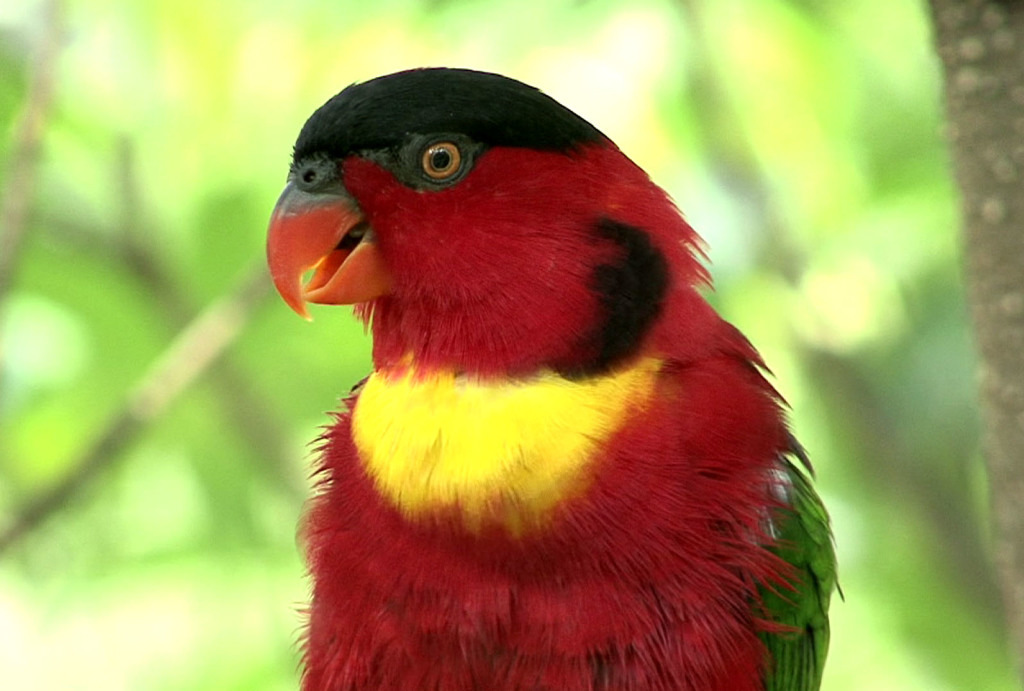The Yellow-Bibbed Lory (Lorius chlorocercus) is a monotypic species of parrot in the Psittaculidae family. This beautiful parrot is endemic to the Solomon Islands. The yellow-bibbed lory is about 11 inches (28 cm) long. It is mostly red, with black on top of the head and green wings. It has a yellow transverse band on the upper chest and a crescent-shaped black patch on each side of the neck.
Yellow-bibbed Lory has vibrant blue-green thighs and dark grey legs. It has an orange-red beak, dark grey eye rings, and orange irises. Under its wings, the bird has blue feathers. Currently, there are only two breeding pairs in the United States. However, they are very sweet, kind birds, and as they’re a type of parrot, they have a relatively large vocabulary for an animal.
The striking Yellow-Bibbed Lory natural habitats are subtropical or tropical moist lowland forests and subtropical or tropical moist montane forests. The parrot calls are described as shrieking and harsh, while feeding emits soft chattering. The bird’s aptitude is harder to breed than some other lorikeets, which can be good as a pet, depending on the bird.
The Yellow-Bibbed Lory likes to eat pollen, nectar, fruits, small seeds and caterpillars, apples, pears, grapes, tangelos, kiwifruit, sultanas, bananas, watermelon (no avocado), and fresh veggies (frozen bags of mixed veggies and frozen corn are ideal records). Numerous bird species in the Solomon Islands are vulnerable just due to their small natural ranges, and forest clearing for agriculture is an ongoing threat.

The Yellow-Bibbed Lory is listed on CITES II and is well considered a Birdlife International “restricted-range” species, which means that, while the species is abundant in numbers, the range of the species is very limited and could be simply threatened.
The yellow-bibbed Lory is a gorgeously bright-red parrot with a black forehead and yellow band on the chest. These lories can be found in Papua New Guinea and the Solomon Islands, where they live in tropical lowland forests. Yellow bibs can make good pets. Cheeky, intelligent, loving, and playful, it’s like having four seasons in one day and having a bib as a pet.



Yellow-Bibbled Lory bibs are habitually very active; you’d quite easily be able to notice if something was wrong. The general level of hygiene is maintained with feeders, cages, and aviaries; normally, you will encounter very few problems. Worm your lorry on a regular basis every 6 months. This is for pets and aviary birds.
It’d be highly suggested that yellow bibs would be more of a bird to try to keep if you are a bird keeper with some experience in keeping lories or lorikeets in the past. If you’re a first-timer, think about it and get some advice first!
Read More:
-
The Mystery Bird “Yellow-Billed Oxpecker”
-
American Purple Gallinule
-
Red Breasted Robin: Friendly Garden Visitors
-
The Honduran Emerald (Amazilia luciae)






